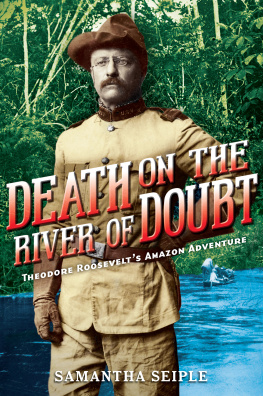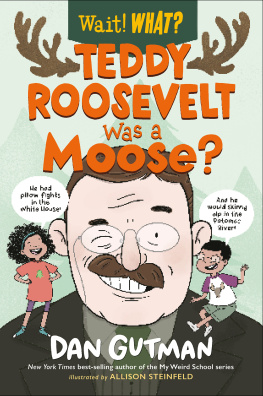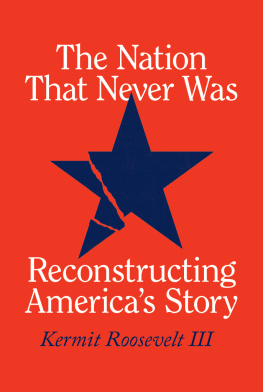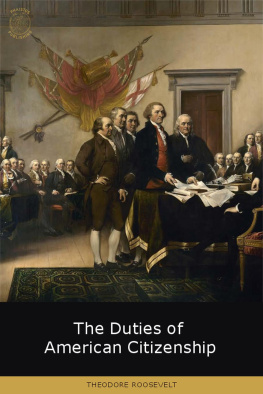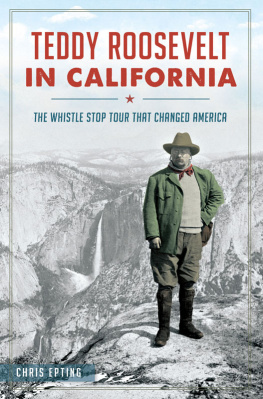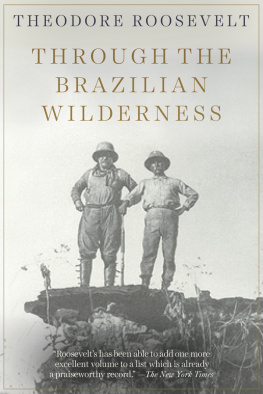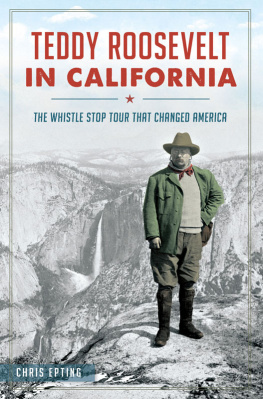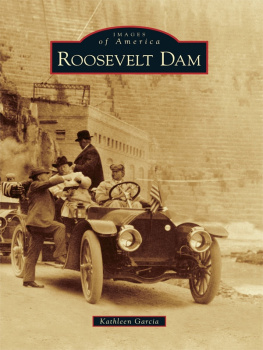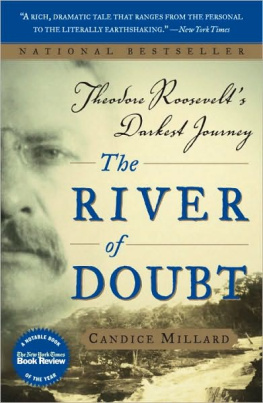P ROLOGUE
Knocking on Deaths Door
March 27, 1914
Day 29 on the River of Doubt
Time was running out. It was twenty-nine days into the journey, and food supplies were frighteningly low. The men were starving. No one knew how many more miles they would have to travel down the River of Doubt. There was no map to follow, and they had no idea what lay ahead. But Theodore Roosevelt and the men who were with him were certain about one thing. If they didnt hurry and get out of the Amazon jungle soon, they would all be dead.
The winding black river stretched out before them like a slithering snake. Roosevelt sat in his lightly packed canoe, weakened from fever, hunger, exhaustion, and worry. His clothes were damp and sticky, and his eyeglasses were foggy from the thick and steamy air.
A slight breeze offered some relief from the insidious and torturous swarms of biting flies, stinging bees, and disease-spreading mosquitoes. Even with mosquito nets and bug repellent, everyone on the expedition was covered with painful bites.

Map of South America in 1913.
The dense tropical trees along the rivers edge towered overhead, providing shade along the banks, while big-beaked toucans called out with their harsh sounds and flocks of parakeets flashed their green, blue, and red feathers.
Hidden from view, in the dark shadows of the forest, were the Cinta Larga Indians. The silent and stealthy natives kept a close watch on the expeditions every move, with their poison arrows primed and ready to shoot.
While the Cinta Largas watched them from the shadows, the adventurers were looking for monkeys hanging from trees. Sometimes, if they were lucky, theyd be able to shoot one to curb their never-ending hunger pains. But times were tough, and monkeys were a rare indulgence lately.
The expedition had discovered the hard way that in this part of the unexplored Amazon jungle, for some reason unknown to them, food was scarce. The Brazil nuts they had been counting on to sustain them were in short supply, and the piglike tapir, with its prehensile snout, was elusive. And in this section of the river, with the exception of the vicious saw-toothed piranhas, fish were few and far between.
Their progress down the Amazon was slow, and after paddling less than two miles that day, steep hills covered with lush green trees appeared before them. It was a sight to behold. But the beauty was quickly overshadowed by the fearsome sound of rapids just ahead. The adventurers knew all too well that it was dangerous to try to paddle their six canoes through the churning waters, and they couldnt risk losing any more canoes or food.
The men pulled their dugout canoes onto the rivers sandy bank and started chopping through the thick vegetation with machetes and knives to make their way around the main rapids. To save precious time, they decided that instead of dragging the heavy canoes over land, they would let them run down the river empty.
The first four empty canoes traveled down to the end of the rapids with great success. The last two, which were tied together, were then set on the course. They rushed down the river but were suddenly turned by the rapids and hurled against some boulders, then became trapped under a tangle of vines and tree branches.
The powerful current pinned the canoes in place, and water quickly rushed into the vessels and sank them. The men knew it was only a matter of time before the force of the water would dislodge the boats, sending them downriver and smashing them to pieces on the edges of jagged boulders.
Everyone quickly ran to help, with Roosevelt being the first to enter the raging river. Using axes, the men chopped away at the rope that tied the two canoes together. Several men made their way to a small island of rocks, just above the canoes, and threw a rope down. Roosevelt and the others below, who were up to their armpits in water and slipping on the mossy rocks, tied the rope to the outermost canoe.
The men above pulled the wet ropes, their hands burning, while those below lifted and shoved, heaving the canoe up. Finally, the canoe was free, and the men slowly dragged it up to safety.
The same procedure was repeated for the second canoe. It was a much-needed victory as both canoes were saved. But the adventurers quickly realized their success had come at a price.
During the ordeal, Roosevelt had slammed his leg into a boulder, gouging his shin. As his blood oozed into the piranha-infested water, he quickly waded to the rivers bank and limped back to the campsite at the foot of the rapids.
At first glance, the wound appeared to be minor. But the former president knew what a bloody gash to his leg really meant, especially in the unknown and unforgiving jungle.
Roosevelt was knocking on deaths door.

Theodore Roosevelt, 1900.
C HAPTER 1
The Naturalist
Five Months Earlier
October 21, 1913
Rio de Janeiro, Brazil, South America
Since leaving New York two and a half weeks ago, Theodore Roosevelts steamship, Vandyck , had been plagued by bad weather. For the last two days, the voyage hadnt been any different as the steamer inched along the coast of Brazil. Despite this, the passengers onboardat least the ones who werent made seasick by the relentless rocking motionwere awed by the sight of huge porpoises and flying fish sailing out of the choppy sea as the vessel cut through the storm.
It was late at night when the city of Rio de Janeiro first came into view, and the ship finally passed the famed Sugar Loaf peak, which marked the entrance into Rios calm natural harbor. The next morning, on October 21, Theodore Roosevelt and the other passengers woke up and looked out from the deck.
They were greeted on all sides by sparkling blue water, soft sandy beaches, and lush green mountains. Rios harbor, considered one of the Seven Natural Wonders of the Worldlike the Grand Canyonwas a breathtaking sight to behold. Even though it was an unseasonably cold morning, there was no doubt that Rio de Janeiro, often called Marvelous Rio, was a paradise.
At that moment, taking in the view of Rio de Janeiro, Roosevelt had no idea that he was about to receive an offer he couldnt refuse. It was a dangerous offerone that could easily get him killed. But it was also of great importance. And that was precisely why the danger-loving, thrill-seeking ex-president of the United States wouldnt be able to resist.
Rio de Janeiro, Brazils capital city at that time, was the second stop on Roosevelts planned tour of South America. He was there, at the request of the governments of Argentina, Brazil, Uruguay, and Chile, to give a series of lectures on world democracy.
Initially, when Roosevelt received the invitation to come and speak, he turned it down. But a few circumstances led him to reconsider.
First, it would be a chance for Roosevelt to visit his twenty-four-year-old son, Kermit, the third of his six children. For the past two years, Kermit had been working in South America, where he was currently supervising the construction of bridges for the Anglo Brazilian Iron Company.

